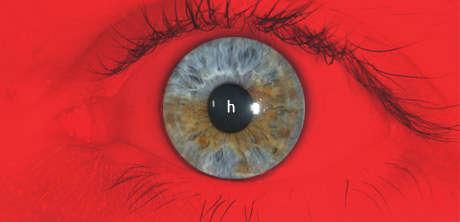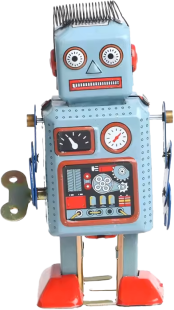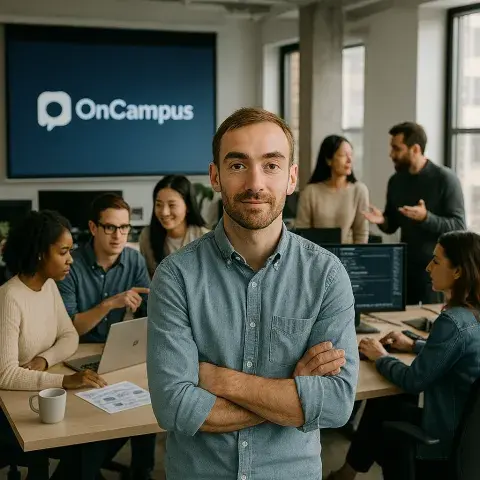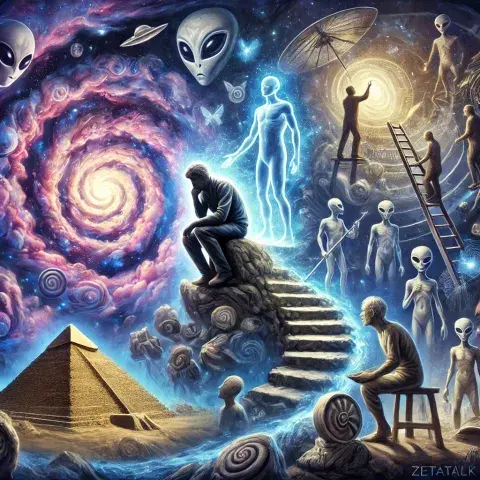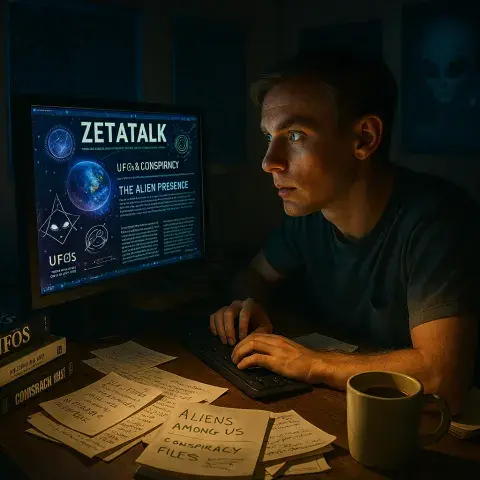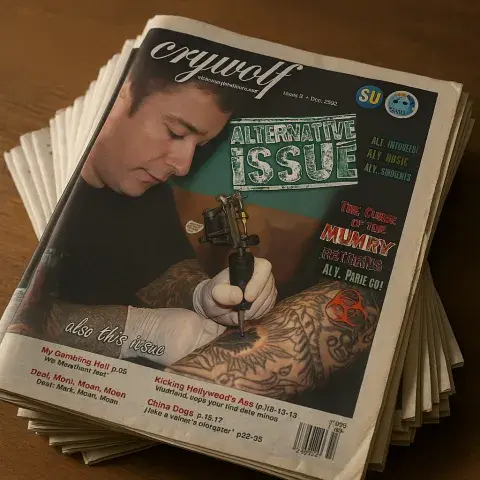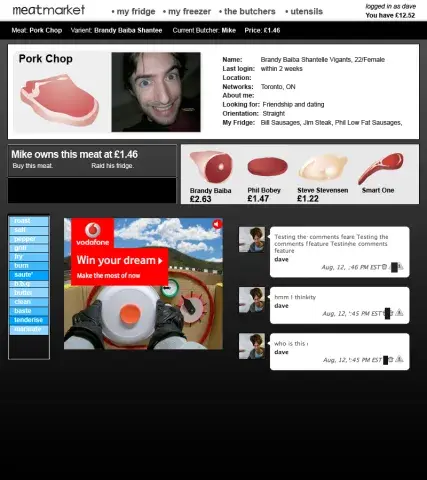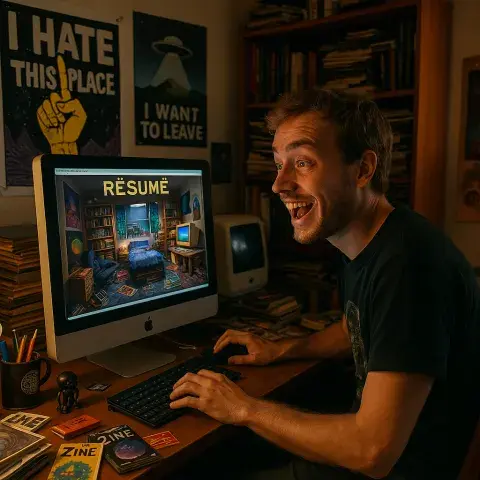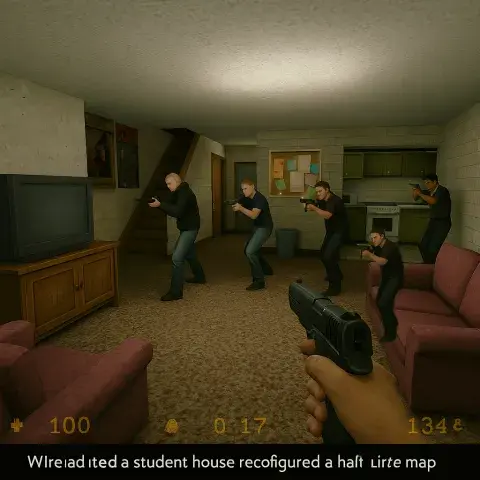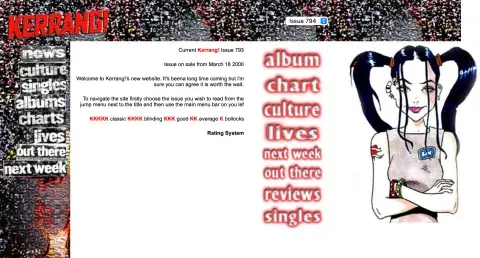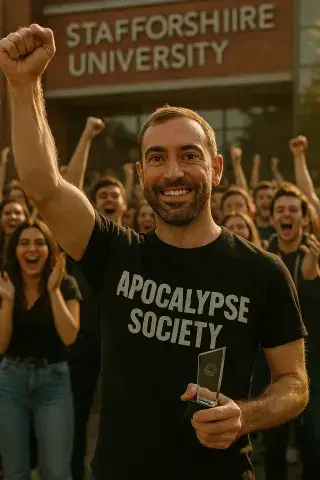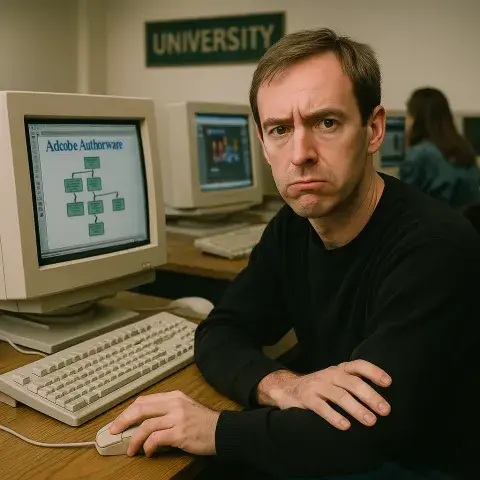Chapter 6 - Hostile Hits the Halls
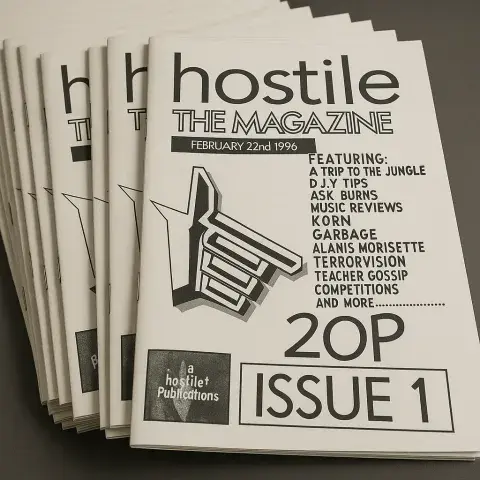
Before I knew it, Hostile Magazine was more than just a personal project. It became something bigger—a product. I started distributing copies around school, and before long, it wasn’t just my classmates reading it. I managed to sell advertising space to local businesses, earning a bit of cash in the process.
Looking back, it might have been my most lucrative venture to date, especially considering how naturally it all came together. I wasn’t just creating anymore—I was running a business, even if I didn’t fully realise it at the time.
One of my proudest moments was designing full-colour posters to promote the magazine. They featured a bold image of a gun and some edgy, provocative slogan. At the time, I thought it was clever—half-witty, half-menacing, exactly the kind of provocation Hostile was built on. But in hindsight, it felt careless.
But timing is everything, and I learned that the hard way. It wasn’t until weeks later, when the tragic Dunblane Massacre dominated the news, that I realised how out of place—and potentially upsetting—those posters were.
The backlash wasn’t loud, but it stung. For the first time, I felt the weight of my choices as a creator. I had wanted to push boundaries, to grab attention, but I hadn’t considered the context, the consequences. It was a humbling moment and one that made me pause and think about the kind of voice I wanted Hostile to have.
Still, the experience taught me something invaluable: the power of ideas, the importance of timing, and the delicate balance between provocation and respect.
The Hostile brand had always been a labor of love, a way to channel my creativity and passion into something tangible. When I stumbled across a national magazine (CVG) that featured a section dedicated to fanzines, it immediately became my next target. Seeing Hostile published there wasn’t just a dream—it became an obsession.
I set to work, creating a new edition: Hostile Playstation, a magazine tailored to the console that was captivating gamers everywhere at the time. I poured my heart into it, researching, writing, and designing until it was ready to send off. The act of posting it felt monumental in itself, as if I were sealing my ambitions into that envelope and sending them off into the world.
Weeks passed. I waited with cautious optimism, checking each new issue of the magazine with bated breath. Then, one day, there it was: my work, my words, my creation in print!
The thrill was indescribable. Seeing Hostile Playstation featured was a validation of everything I’d been working toward. It wasn’t just the joy of being published—it was the sense that my voice had been heard, that my efforts had been recognised on a national level.
That moment became a cornerstone in my creative journey, a reminder that determination and a willingness to put yourself out there could lead to incredible opportunities. I’d tasted what it felt like to be heard—and I wasn’t going back.
